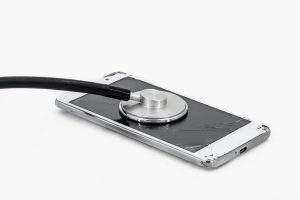Semaglutide therapy, combined with telemedicine through an online doctor, offers a revolutionary approach to managing type 2 diabetes and weight-related issues. This method enhances accessibility, convenience, and patient adherence, especially for remote or busy individuals. Real-time tracking via secure video conferencing, health apps, and wearables enables continuous care, improving outcomes and satisfaction. Patient selection is crucial; ideal candidates include adults with stable conditions who understand digital tools. Effective management requires robust communication, education, and training for healthcare providers to ensure safety and efficacy outside clinical settings. The future holds promise with advancements in digital health technology, including potential AI integration for improved patient outcomes.
In today’s digital era, remote monitoring of medication adherence is transforming healthcare. Semaglutide, a groundbreaking diabetes treatment, offers significant benefits but requires close supervision. This article explores how online doctors play a pivotal role in remotely monitoring semaglutide therapy, enhancing patient outcomes. We delve into the advantages, technologies, and criteria for effective remote management, while also addressing challenges and best practices for healthcare providers. Discover the future of diabetes care with online doctor support for semaglutide treatment.
Understanding Semaglutide Therapy and its Benefits

Semaglutide therapy is a groundbreaking treatment option for various metabolic conditions, particularly type 2 diabetes and weight management. This medication, administered via injection or as a tablet, mimics the effects of a natural hormone called GLP-1, which plays a crucial role in regulating blood sugar levels and promoting satiety. The benefits of semaglutide are well-documented, including improved glycemic control, reduced body weight, and lower risks of diabetes-related complications.
With advancements in telemedicine, healthcare providers now have the capability to remotely monitor patients undergoing semaglutide treatment. An online doctor for semaglutide can provide ongoing support, adjust dosage as needed, and offer guidance on managing potential side effects. This remote monitoring approach enhances patient convenience, accessibility, and adherence to treatment plans, ultimately leading to better health outcomes in the management of chronic conditions.
The Role of Online Doctors in Remote Monitoring

In today’s digital era, remote monitoring of semaglutide treatment has become increasingly feasible with the integration of online doctors. These virtual healthcare providers play a pivotal role in managing patients’ semaglutide regimens, offering consultations and guidance from a distance. Through secure video conferencing platforms, online doctors can assess patients’ progress, adjust dosage as needed, and provide crucial education on medication use—all without requiring an in-person visit.
By leveraging technology for remote monitoring, healthcare providers equipped with online doctor services enhance accessibility to care, especially beneficial for patients living in remote areas or facing mobility challenges. This approach not only simplifies the management of chronic conditions like type 2 diabetes but also contributes to improved treatment adherence and outcomes for those on semaglutide therapy.
Advantages of Remote Monitoring for Semaglutide Treatment

Remote monitoring offers several advantages for healthcare providers managing semaglutide treatment. One key benefit is improved patient access and convenience. With an online doctor for semaglutide, patients can receive regular check-ins and monitoring from the comfort of their homes, eliminating the need for frequent in-person visits. This flexibility is especially valuable for individuals with busy schedules or those living in remote areas who might face challenges accessing specialized care.
Additionally, remote monitoring allows healthcare providers to track patient progress in real-time, enabling more proactive management. By analyzing data such as blood sugar levels and weight changes, doctors can promptly identify trends, adjust treatment plans if necessary, and offer personalized guidance without requiring patients to travel for consultations. This technology fosters a continuous care experience, enhancing patient outcomes and satisfaction.
Technologies Used for Effective Remote Management

In the realm of modern healthcare, technologies like telemedicine and digital health platforms play a pivotal role in facilitating effective remote monitoring of semaglutide treatment. These innovative tools enable online doctor consultations, allowing patients to receive guidance and support from the comfort of their homes. Through secure video conferencing, patients can discuss their experiences, share symptoms, and address any concerns with healthcare providers who are remotely connected yet highly engaged.
Additionally, digital health apps and wearables equipped with advanced sensors offer continuous monitoring capabilities, tracking key health metrics relevant to semaglutide therapy. These devices seamlessly transmit data in real-time, empowering healthcare professionals to make informed decisions and adjust treatment plans as needed. This seamless integration of technology ensures consistent care, enhances patient compliance, and ultimately contributes to better outcomes for individuals managing their health with semaglutide.
Patient Selection Criteria for Remote Monitoring Programs

Patient selection is a key aspect in designing successful remote monitoring programs for semaglutide treatment. Ideal candidates are typically those with type 2 diabetes who have been initiated on semaglutide therapy and have a good understanding of their condition and medication. These patients should be comfortable using digital tools for communication and monitoring, such as online doctor consultations and smartphone apps. Regular follow-ups with healthcare providers are essential to ensure adherence, manage potential side effects, and adjust treatment plans as needed.
Criteria may include age (often adults), a stable medical history, and the ability to provide informed consent. Exclusion factors might involve certain comorbidities that could complicate monitoring or patients who lack access to technology required for remote participation. An online doctor for semaglutide can play a pivotal role in evaluating these criteria and personalizing care paths for each patient, ensuring optimal outcomes through convenient, at-home management.
Challenges and Considerations for Healthcare Providers

The remote monitoring of semaglutide treatment presents unique challenges and considerations for healthcare providers. One key hurdle is ensuring patient safety and efficacy when managing this complex medication outside of traditional clinical settings. With online doctor consultations for semaglutide, it’s crucial to establish robust communication channels and secure digital platforms to accurately assess patients’ responses, manage side effects, and make necessary adjustments to treatment plans.
Another challenge lies in the need for continuous education and training among healthcare providers to stay abreast of the latest research and guidelines on semaglutide therapy. As online doctor visits for semaglutide gain popularity, maintaining high standards of care requires ongoing professional development to interpret data accurately, identify potential complications early on, and provide personalized support to patients engaging in remote monitoring.
Best Practices for Successful Implementation and Future Outlook

Best Practices for Successful Implementation
To ensure successful remote monitoring of semaglutide treatment, healthcare providers should prioritize clear communication strategies. Regular virtual check-ins with patients via video conferencing or secure messaging apps allow doctors to observe treatment adherence, discuss any concerns, and adjust dosing plans accordingly. Additionally, educating both patients and caregivers on the online doctor for semaglutide platform is vital. User-friendly interfaces and comprehensive training sessions can enhance user experience, encouraging active participation in managing the treatment process.
Looking ahead, the future outlook for remote monitoring of semaglutide therapy appears promising. Advancements in digital health technology will likely lead to more sophisticated tools and platforms, enabling healthcare providers to offer personalized care at a distance. Integration with artificial intelligence could automate certain aspects, such as data analysis and prediction models, further streamlining the process and improving patient outcomes.
